Despite ‘Frankenchicken’ headlines and activist campaigns designed to shame retailers, few have adopted the Better Chicken Commitment poultry welfare standard. So what’s stopping BCC taking off in the UK in the same way as elsewhere?
In a supermarket car park, Hugh Fearnley-Whittingstall is cramming 17 chickens into a box measuring one square metre. Passers by are visibly uncomfortable. “I don’t like it,” says one. “It’s cruel,” laments another.
But this wasn’t gratuitous animal cruelty. This was part of Hugh’s Chicken Run, a programme that aired in 2008 to highlight the standard legal conditions for rearing chickens. Through the show, Fearnley-Whittingstall aimed to bring about change in the industry.
Ten years later, a breakthrough came in the form of the Better Chicken Commitment (BCC). In 2018, animal welfare groups combined their agendas into a singular, global voluntary standard that stipulated more space, natural light and enrichment for birds. And, in what has emerged as increasingly crucial talking point, it called for the adoption of slower-growing breeds rather than faster-growing ‘Frankenchickens’.
The RSPCA said retailer commitments to the standard would have “a massive impact on welfare in a very positive way”.
However, that impact is yet to come to fruition in the UK. While take-up has been rapid in countries such as the Netherlands – where retailers will only sell chicken produced within BCC standards by the end of this year – the UK has been slow to cotton on.
Only M&S and Waitrose have committed to the BCC in full, which means adopting all the standards by 2026. Others have taken a more piecemeal approach. Sainsbury’s and The Co-op have reduced their stocking density but do not utilise slower-growing breeds. Meanwhile, Tesco and Morrisons have introduced some lines that meet BCC standards.
The Better Chicken Commitment
- By signing up to The Better Chicken Commitment, a business states it will require its suppliers to meet the following requirements for all the chicken in the supply chain – fresh, frozen, and processed – by 2026:
- Comply with all EU animal welfare laws and regulations, regardless of the country of production.
- Implement a maximum stocking density of 30kg/m² or less.
- Adopt breeds that demonstrate higher welfare outcomes
- Meet improved environmental standards around lighting, available perch space and air quality, and avoid use of cages or multi-tier systems.
- Adopt controlled atmospheric stunning using inert gas or multi-phase systems, or effective electrical stunning without live inversion.
- Demonstrate compliance with the above standards through third-party auditing and annual public reporting on progress towards the commitment.
Now retailers are facing mounting pressure from campaigners to adopt the standards – pressure that has included a High Court battle and undercover filming. So what’s stopping them from making the move?
As the only UK retailer to have made all its fresh chicken BCC-compliant, M&S is a prime example of the work and benefits involved.
The retailer secured a commercial deal to convert all its Oakham chicken to Oakham Gold, by using breeding flocks from slower-growing breeds. Speaking at a recent event hosted by chicken breeder Hubbard, M&S agriculture manager Vivienne Harris explained it took around two years to rear enough birds to produce a regular supply of chicks.
This required a “really joined-up approach with our suppliers” she said. “Establishing those breeding flocks and that space on the ground took a lot of strategic planning. We needed to engage everyone in the chain.”
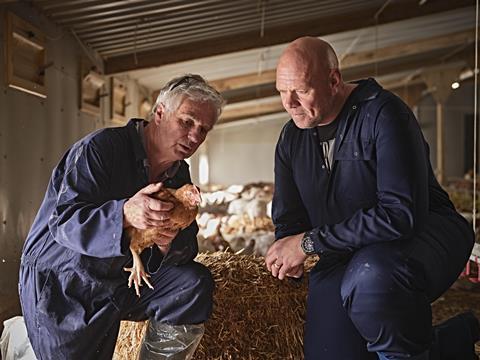
For M&S, the work has been worth it. The retailer says it is seeing improvements in its welfare measures, and has bolstered its ethical credentials. This is likely to boost its appeal among shoppers: a 2015 Mintel survey found 74% of UK consumers agreed sourcing meat from animals that are well looked after is among the top criteria that makes a food company ethical.
There are also benefits for suppliers. One farmer who has recently moved to rearing BCC birds for M&S says he previously had concerns about being targeted by animal welfare activists, but now feels more secure.
But the experience of M&S also serves to illustrate why not all retailers are taking the plunge. Changing stocking density and introducing enrichment can be done relatively quickly, and switched back if the market changes. As Oakham Gold highlights, a switch to slower-growing breeds is very different – it’s a long-term strategy that requires commitment.
Pricing and production
That’s a tough commitment to make during a cost of living crisis. It costs around 15% more to raise chicken under BCC standards than conventional methods – costs that are reflected in retail prices.
M&S BCC chicken sells at £5.25 per kg, which – although cheaper than free-range chickens – is higher than standard chickens at other retailers that sell for between £3 and £3.50 per kg. At a time of rampant food inflation, intense competition on price and squeezed purses, it may not seem like an attractive prospect for the major supermarkets.
Plus, if all retailers switched to slower-growing breeds, it could threaten the trade balance of poultry. For countries that are net exporters, such as the Netherlands, consumer demand can still be met following a reduction in domestic production.
“Establishing those breeding flocks and that space on the ground took a lot of strategic planning. We needed to engage everyone in the chain”
Vivienne Harris, M&S agriculture manager
A reduction in the UK’s domestic production, on the other hand, could have unintended consequences. Retailers would have to rely on imports that wouldn’t necessarily meet domestic standards – proving a blow, rather than a win, for welfare.
It could also attract negative media coverage. See the reaction to Sainsbury’s stocking of Italian barn eggs due to low UK availability – a move that overshadowed the retailer reducing the stocking density in its chicken supply chain. These concerns could be one reason companies like Sainsbury’s and the Co-op are choosing to meet the BCC demands except the breed.
Mounting pressure
Yet these arguments aren’t washing with animal welfare campaigners like The Humane League UK.
While the organisation understands the challenges of the pandemic, the war in Ukraine and the cost of living crisis, it believes these are not good enough reasons for failing to adopt the BCC.
“There is simply no excuse for raising animals in this way,” says Claire Williams, campaigns manager for the group. “We’ve been asking for retailers to make this change since 2018.”
For Williams, getting the big retailers on board is crucial to changing welfare standards on a meaningful scale. “They are the bulk of the supply chain and by signing up, they will enable other companies to implement [the standards],” she says.
She has a point. While suppliers including Nestlé, Unilever and Kraft Heinz have committed to producing to the BCC standards, they only use certain chicken cuts in their products, which has obvious implications for carcase balance. If more retailers commit to BCC, it will open up the standard to other suppliers.
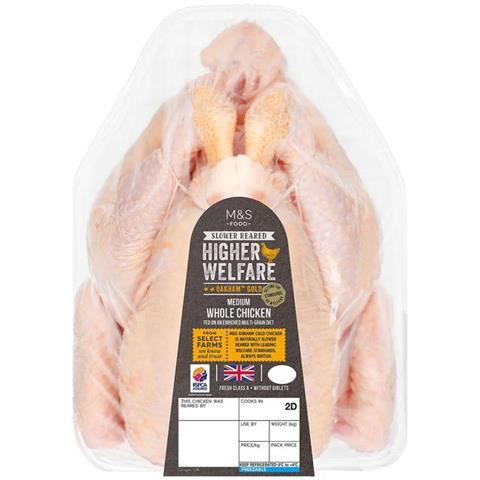
The Humane League UK is now looking to shine a greater spotlight on the issue. In May, it took Defra to the High Court for permitting the rearing of faster-growing breeds, or ‘Frankenchickens’. Supported by evidence from the RSPCA, the NGO claimed it was illegal on animal welfare grounds.
While the High Court rejected the argument, Williams is keen to keep up the pressure. The Humane League UK’s strategy is to talk to retailers and suppliers, and Williams says the organisation is willing to negotiate. But, she adds: “If we feel those conversations are not progressing, then a public-facing campaign would start.”
One can only guess how those conversations have gone with Lidl. Groups including Open Cages and The Humane League UK have been targeting the retailer and its supply chain, with an undercover video in June that claims to show poor treatment of poultry.
“We’ve been asking for retailers to make this change since 2018”
Claire Williams, campaign manager at Humane League UK
This action has prompted pushback from the industry, which claims it is being misrepresented. “If a farm has major non-conformance or if it is shown there is clear evidence of malicious or deliberate cruelty, then its hands-up time,” says a senior industry source.
“But when you get a good farm being denigrated, with all the data points to prove it’s a well-run operation, well that is simply unfair, unjust on the farmers, and needs addressing.”
Some question whether campaigners are pushing the issue too hard, too soon. “The most difficult part is the speed that the NGOs want it [BCC] implemented outside of the normal investment cycle of the industry,” says François Cadudal, consultant with food supply chain firm Gira.
Where do retailers stand on BCC?
Aldi: Has a range of welfare tiers in fresh chicken, but not BCC.
Asda: Has a range of welfare tiers in fresh chicken, but not BCC.
Co-op: Has reduced stocking density to 30kg per m² but has not utilised slower-growing breeds.
Lidl: Has a range of welfare tiers in fresh chicken, but not BCC.
M&S: BCC-compliant in fresh chicken, other categories targeted to become BCC by 2026.
Morrisons: Sells some lines that meet BCC standards.
Sainsbury’s: Has reduced stocking density to 30kg per m² but has not utilised slower-growing breeds.
Tesco: Sells some lines that meet BCC standards.
Waitrose: Plans to become 100% BCC compliant in 2026.
Nuanced argument
There is also the question of whether BCC is focusing on the right issues – particularly breeds. For RSPCA poultry specialist Kate Parkes, putting an end to faster-growing breeds is crucial to ensuring health and welfare. “Without addressing the breed issue they are just tinkering round the edges,” she says.
But Daniel Parker, emeritus director of specialist poultry veterinary practice Slate Hall, points out welfare should not be approached as a single issue. Making changes in one area can have a wider impact on sustainability, he says.
While slower-growing birds are easy to grow and more forgiving, meaning there is less requirement for precision management, he explains they eat more food, drink more water per kilogram of meat produced and yield less meat. “They also take longer to get to final slaughter weight, increasing housing requirements,” he adds. “All this will increase greenhouse gas emissions per kilo of meat.”
It’s a view echoed by the British Poultry Council . It says switching to slow-growing breeds would hamper efficiency and productivity, which would take its toll on the environment and cost of production.
“The commercial reality is that slow-growing and sustainable food systems are moving in different directions,” says a spokesperson. “We cannot produce, or eat, slower-grown products without an increased impact on factors such as feed and yield.”
Then there are those who take an even wider view. Dr James Bentley, technical director for chicken breeder Hubbard, believes sustainability and BCC chicken can be compatible when looking at the total picture.
“When we talk about sustainability, we usually focus on the narrow perspective of environmental and global warming potential, but for me, sustainability is about much more than that,” he explains.
“We have to consider many different concepts, whether it’s welfare, cost of production, eating quality or benefits for farmers. We have to add them together and quantify them.”
Feed also plays a role in sustainability, Bentley points out: “If we have total reliance on soya, then we have issues with water use, biodiversity and geopolitics. So, we have to think how more local ingredients can be part of a chicken concept. It’s not just animal welfare, other things may be important.
“Very little research has been conducted on circular agriculture. This is a space researchers really need to focus on more for poultry.”
In the meantime, the debate around BCC shows no sign of dying down. And as ‘Frankenchicken’ continues to make headlines, retailers will have to decide whether the time is right to start making moves.



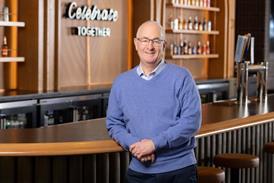




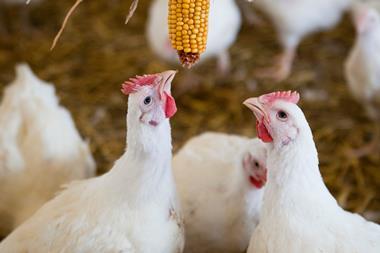
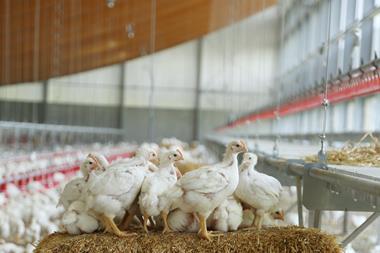
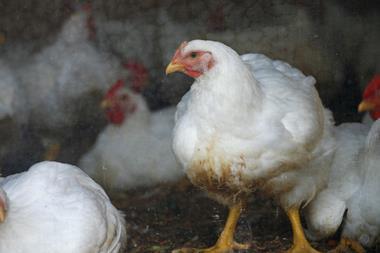
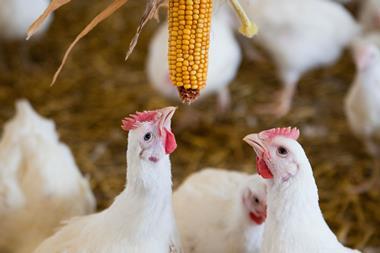

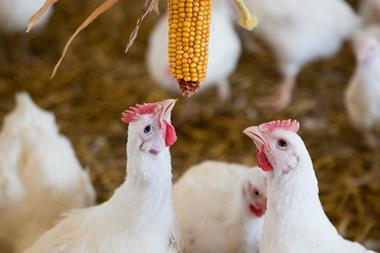






No comments yet